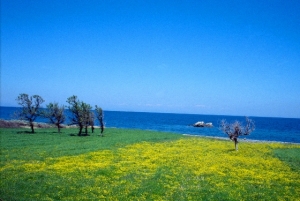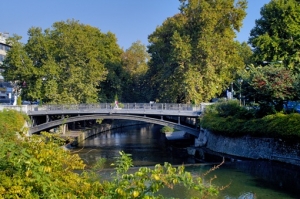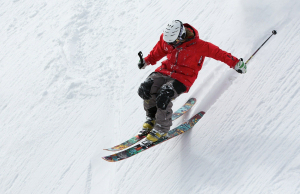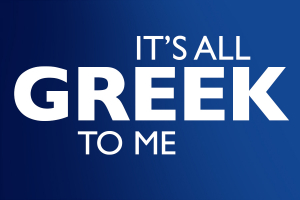XpatAthens
Samothrace
The island of Samothrace in the north Aegean Sea is known for its wild, virgin natural beauty. Mt. Saos highest peak, called Fengari (the moon, in Greek) with its 1.611 meters (5.285 feet) is the second highest peak of the Aegean, second only to Psiloritis on Crete and is often covered with snow in winter months. Poseidon watched the Trojan War seated on this high peak, as Homer mentions. Mt. Saos, once an active volcano, has been recently included in the European Mountaineering Path.
It is rare to find any other Greek island which combines so many water springs, is rich in flora, with plane trees, oaks, olives, scent of oregano and thyme, hundreds of goats grazing wild, clean desert shores with cliffs, sea caves, streams, waterfalls and dramatic volcanic scenery at the same time.
Samothrace has recently received the International Quality Coast Gold Award for 2012, among 100 destinations worldwide, for its efforts to achieve good standards in sustainable tourism and for excellence in the categories of nature and identity.
The landscapes one encounters in the north and eastern parts of Samothrace are very different from the ones in the south and western part. There’s no road to drive to all parts of the island, so the visitor can alternatively take the boat trip running in the summer months to see and visit the isolated virgin shores. The coasts are very clean, mostly covered with pebbles. On the island’s southern part a dirt road leads to Pachia Ammos beach to the south, the most visited one, covered with golden sand. There one can reach the chapel of Panagia Krimniotissa, high on the steep cliff, dominating the area. The dramatic shore of Kipoi at the end of the road to the east, with dark volcanic gray and black pebbles reveals one of Samothrace’s secret beauties.
Paliapolis, one of the most beautiful and important archaeological sites of Greece, is located where the ancient capital and once the main seaport of the island used to be, on the northern coast. As a mystical centre in antiquity, it attracted thousands of pilgrims, among them famous personalities, who came to be initiated to the Mysteries of Kabeiroi in order to ensure a happy life after death. It was the island’s famed religious centre for centuries, where the ruins of the ancient city and of the Sanctuary of Great Gods survive in a Delphic landscape with plane-trees and oleanders. The visitor can also see some of the finds, discovered by French, Austrian, American and Greeks in a period of almost 150 years’ excavations, at the site’s small Museum. The most famous discovery was the renowned statue of Nike of Samothrace – the winged Victory goddess – kept in the Louvre Museum since 1863.
The island’s modern port and biggest settlement is Kamariotissa. The capital town is Chora, a traditional listed under protection settlement, built on the mountain slope in the 15th century like an amphitheatre, at an altitude of 300 m., between the slopes of Mt. Saos. It has two-storey stone houses with tiled roofs, paved squares and beautiful cobbled roads, free of cars. There, the Church of the Assumption of the Virgin Mary (1875), the Folklore Museum and the ruins of the medieval Castle, constructed by the Genovese Gattilusi family around 1400.
With its 999 chapels and churches, the island’s religious festivals attract many visitors from the mainland, reviving the local customs, with traditional music, dances and gastronomy. Not to be missed, is the delicious Samothracian goat, cooked in many different ways in the tavernas all over the island and the fresh fish brought by the boats to Kamariotissa port every morning.
Author: Efi Kalamboukidou-Paschali
Licensed Tourist Guide
& Conservator of Antiquities
Author of travel guide book
“Samothrace, History-Archaeology-Touring”
Source: visitgreece.gr
Greek Study Shows Benefits Of A Mediterranean Diet
The benefits of Mediterranean food went beyond merely keeping people's weight down. In fact the study's authors said that adherence to the diet did not tend to affect whether someone was overweight - which would predispose them to type 2 diabetes.
"This suggests that the protection of the Mediterranean diet against diabetes is not through weight control, but through several dietary characteristics of the Mediterranean diet," the study's authors said.
The use of extra virgin olive oil, which led to a high ratio of mono-unsaturated fats to saturated fatty acids, may be the cause they said, but added that information on this was still conflicting.
By Charlie Cooper
www.noosanews.com.au
Creditors Hold Tough Stance As Greece Presents Reforms
As pressure builds on Greece to implement economic reforms in order to secure crucial rescue funding, the country’s representative to the Euro Working Group on Wednesday presented to his eurozone counterparts the six proposals Greece intends to make at Monday’s Eurogroup meeting in Brussels.
During a teleconference discussion, Giorgos Houliarakis fleshed out the six proposed reforms Athens intends to discuss with representatives of the country’s international creditors in a bid to clinch a portion of a 7.2-billion-euro pending loan installment.
Those measures include tackling the country’s humanitarian crisis, reforming the public administration, introducing a payment scheme for Greeks with debts to the state and overhauling tax collection.
Greek efforts to prepare the ground for the Eurogroup came as European officials indicated that the country has little room for maneuver.
At a joint press conference with European Commission President Jean-Claude Juncker in Brussels on Wednesday, German Chancellor Angela Merkel refused to speculate on the possible need of a third loan package for Greece, noting that much work remained with the current program. “I think we now have all our hands full to make this... succeed,” Merkel said.
To read more, please visit ekathimerini.com
Trikala
Top Ski Resorts Near Athens

@parnassos.gr
This resort is probably Greece’s most popular ski center because it is very easy to access, located only about two hours from Athens. It is also close to the popular ancient archaeological site of Delphi. There you will find 17 lifts, 13 main modern lifts and 4 baby lifts, 23 slopes, and 7 ski trails with a total length of 34 km.

@kalavritaskiresort

@velouchi4mount
Basic Greek For Traveling
Greek Tourism Ranks 14th Worldwide
'Maddie Goes To Athens' By Agnieszka Fibak
February 13th - Love Is In The Air
UNWTO Encourages Travelers To Stick With Plans And Visit Greece
Please click here for more information on how you can help the victims of the Attica wildfires.











